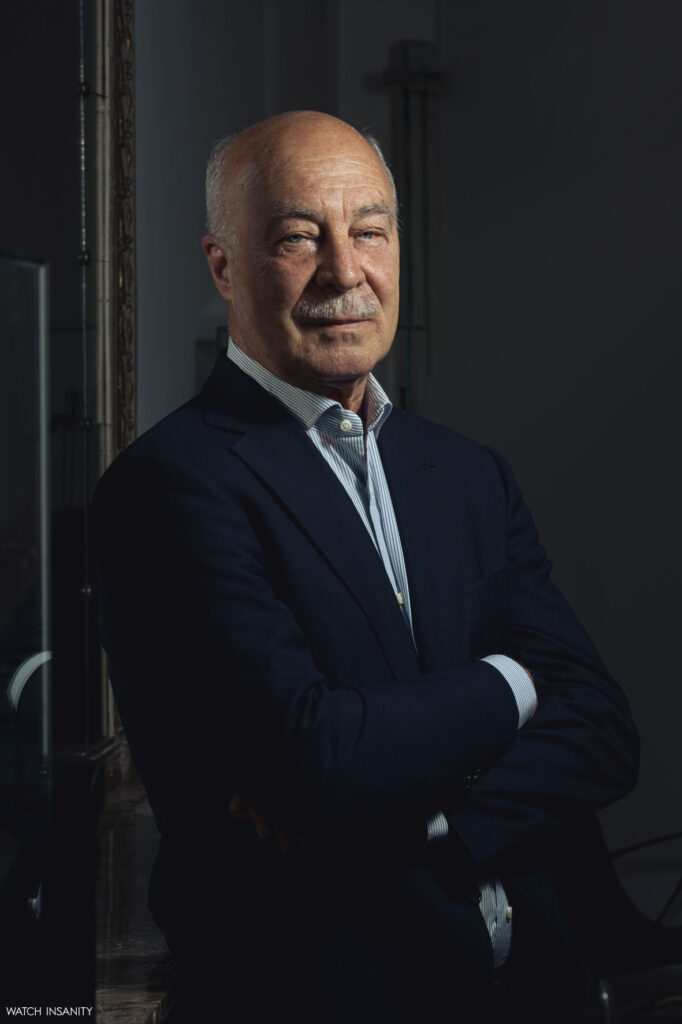Jaeger-LeCoultre Reverso and Corvo: The story of a rebirth
5 July 2021It would be too easy to celebrate the Jaeger-LeCoultre Reverso’s 90th birthday in 2021 speaking only of the models that the brand presented this year, from the Reverso Tribute Nonantième to the Hybris Mechanica Caliber 185 Quadriptyque, up to the Small Seconds with green dial and green strap.
Too easy because the Reverso Tribute Nonantième with the moonphase display and the large date on the front dial, along with the semi-jumping digital hour indication on the back, is more than a celebratory watch: it is an invitation to be amazed. Because the green Small Seconds is a hymn to levity, despite its sober classicism. Because the Hybris, with its 11 complications and 6 years of development, is the first wristwatch in the world with four working dials – and embodies well Jaeger-LeCoultre’s “hybris”, according to ancient Greece style, daring to challenge the gods of micromechanics.
Too easy, because the history of the Reverso, or rather, the history of its revival is largely Italian, Milanese to be precise. Thanks to the Corvo family whose patron, Giorgio Corvo, founded Corvo & C. in Milan in 1960, following his passion for Haute Horlogerie and Jaeger-LeCoultre manufacture, of which he became the distributor for the Italian market.
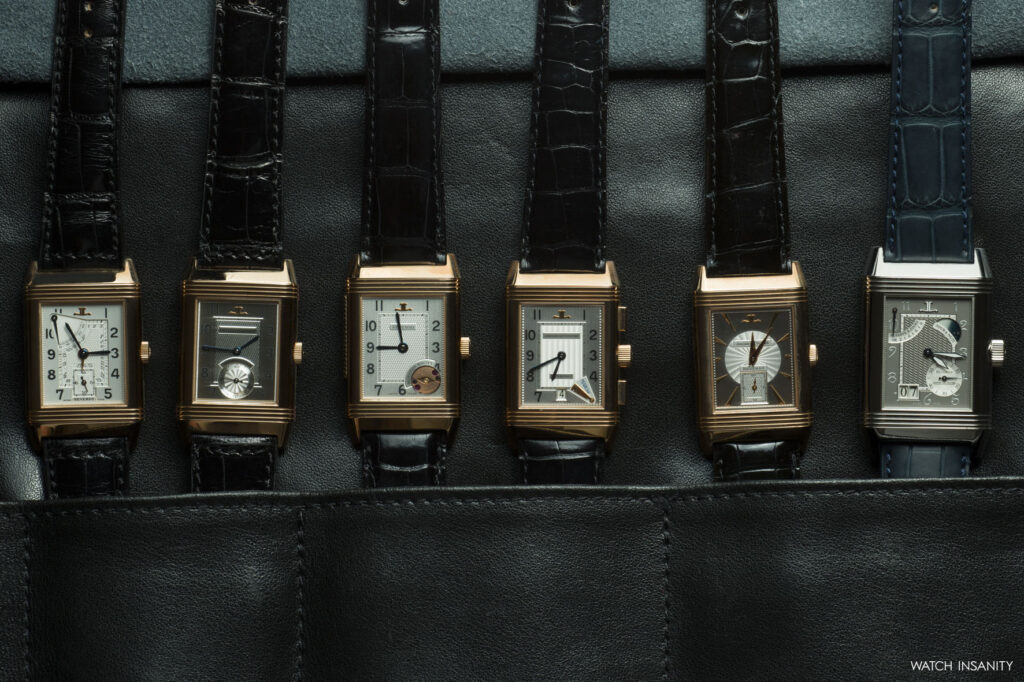
So, who better than Michele Corvo, son of Giorgio and at the helm of the company since 1997, can tell why without his family, perhaps, the Reverso would have remained an illustrious fallen watch, locked in the drawers of the Le Sentier factory?
“It was the early 1970s when, while visiting the factory, my father saw some steel cases of the Reverso from the 1940s without movement or dial,” Michele Corvo explains. “At the time, Jaeger-LeCoultre had a good commercial appeal only for some watches such as the Atmos clock, the Memovox, the Padlock and few else. Seeing the cases, my father told the commercial director Monsieur Constantin: ‘Why don’t we reissue this watch, which is part of your history and has been a huge success?’ Constantin explained that there was nothing that could bring it back to life, because there were no movements, dials, etc., but my father did not lose heart: ‘Give me a case, I’ll take it to Italy,’ he replied.”
And what happened?
At that time, we had a good atelier for after-sales service, with good technicians; our chief engineer created a movement holder and encased in it a hand-wound caliber 480, a small oval movement: it was perfectly fine inserted into the movement holder. So, my father came back to Le Sentier to show the work demonstrating that the reissue could be done. There were about 200 steel cases laying in the manufacture and, following my father’s interest in selling them in Italy, Jaeger-LeCoultre produced the watches by replicating our system – which was rather handcrafted – in an industrial way. They made two types of dials, one white and one gray with Roman indexes. We were in the mid-70s. The watches were brought to Italy and sold in only a few days to 3-4 important customers in Rome and Milan.
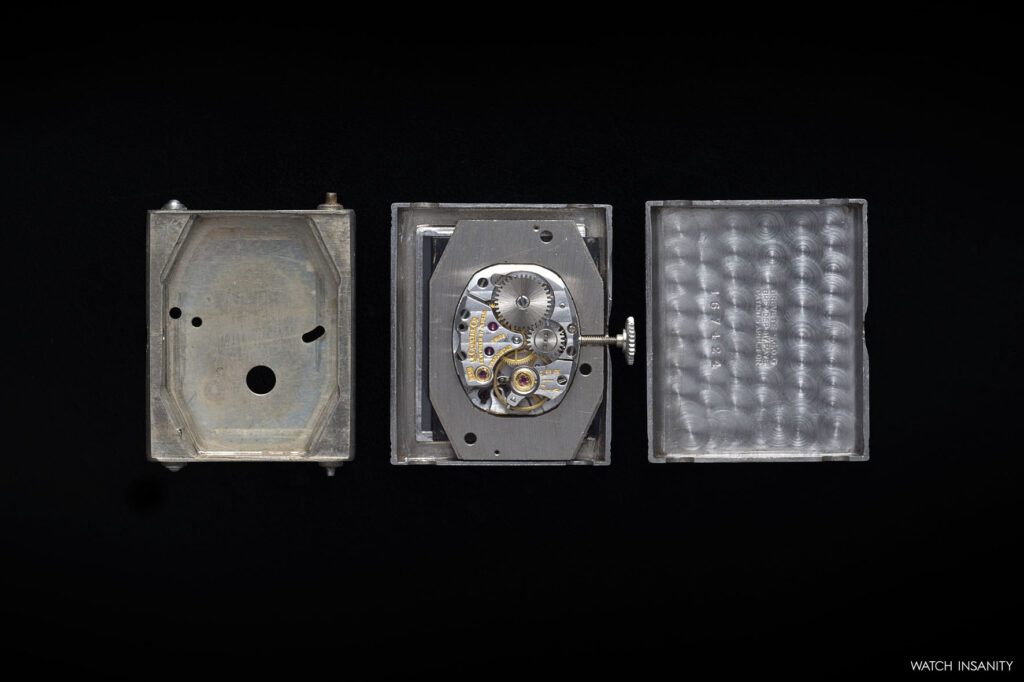
Was Jaeger-LeCoultre skeptical?
At first, the Swiss were absolutely skeptical about the operation: this is why my father brought the watches to Italy. Then, at his insistence, and when they realized that the revamped Reverso could be useful to Jaeger-LeCoultre for a global relaunch, they developed the project little by little. Production of the first Reverso began in 1975 with the Caliber 486 movement, housed in a case thinner than the old one and with a slightly revised style. That watch had no screwed back case but a pressure-fit one which therefore made it permeable to dust and humidity. The first gold Reverso for men came in 1978.
Why had such a symbolic watch been left aside in the manufacture?
Basically because they no longer had the old Tavannes movement encased in the original one: creating a new movement specifically for the watch would have involved significant investments. They had run around without having the idea of trying to insert a smaller movement into the case. In addition, in the 1970s the market wanted watches with a round case, it was difficult to sell those with a square case.
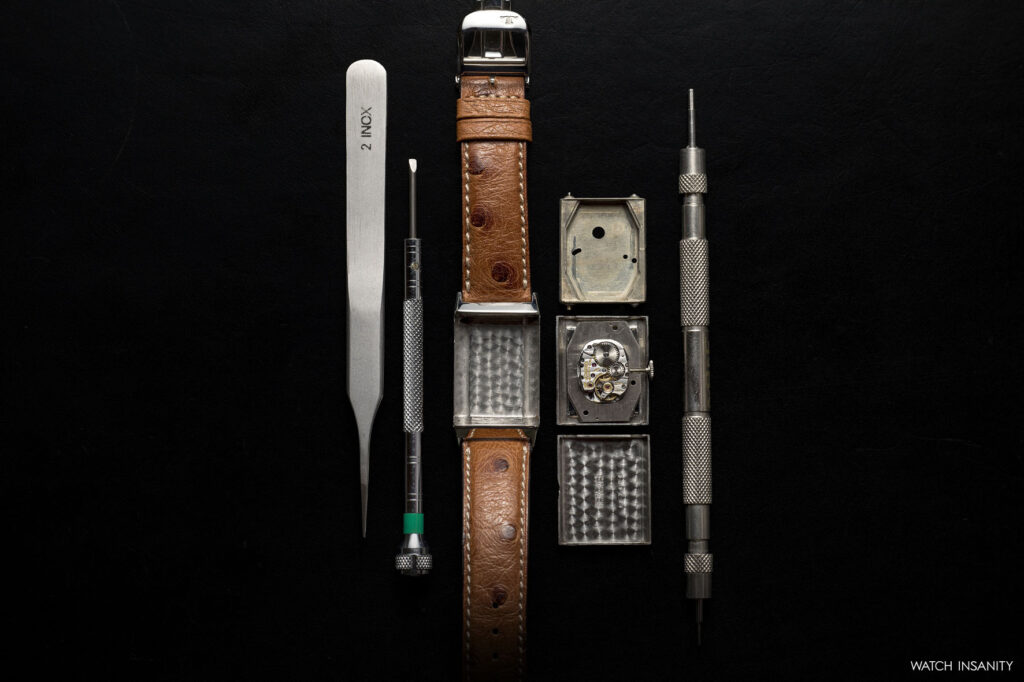
How long had those cases been unused?
I believe they had been lying there after WWII, because the boom period was between the 1930s and 1940s, with the last Reverso released in 1948. Furthermore, those cases were made of Staybrite steel, a precursor to stainless steel, so they dated back to the 1930s.
How long did it take to develop your idea?
In 1972 we made the first prototype of the ‘Reverso Corvo,’ in 1975 came the first watch made by Jaeger-LeCoultre – at the time one of the few manufacturers that could build both the movements and the cases in-house. It was a time when top-level watchmakers like Philippe Dufour worked in the manufacture, people who later founded their own brands. In short, they had the know-how, but the Reverso suffered from a strong initial distrust due to the success of round watches and the upcoming quartz revolution.
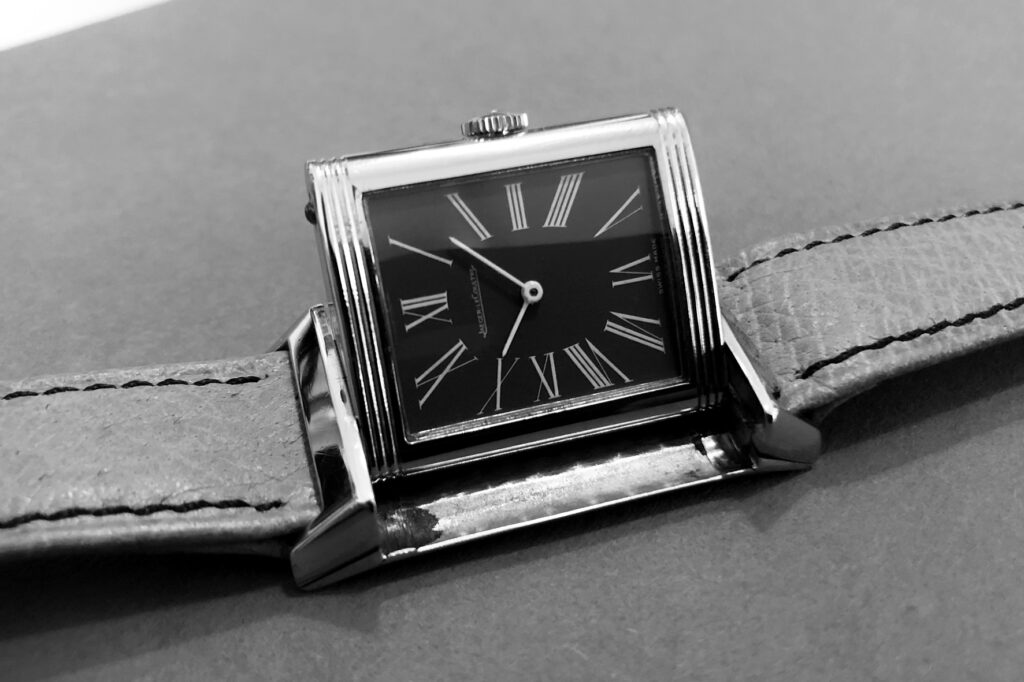
What were the early 1970s like for the Reverso distribution on the market?
The Corvo series, created starting with those 200 steel cases, was sold to dealers who had already worked with Jaeger-LeCoultre since the beginning and knew the Reverso; families such as Hausmann in Rome, Pisa in Milan, even if the bulk of the sales of the ‘Reverso Corvo’ was made by Fiumi, who had its shop in via Manzoni in Milan: it was one of the first dealers of the brand in Italy, when horology was at heroic levels. Let’s not forget that Jaeger-LeCoultre was not an easy brand to sell. The revival of the Reverso therefore started gradually with those who already knew the brand, and then gradually reaching others. The real boom came in the mid-80s and its peak in the 90s, with the Grand Taille. In the 1990s, Jaeger-LeCoultre’s turnover grew by 25% per year, driven by the Reverso: we managed to sell up to 7,000 pieces in one year.
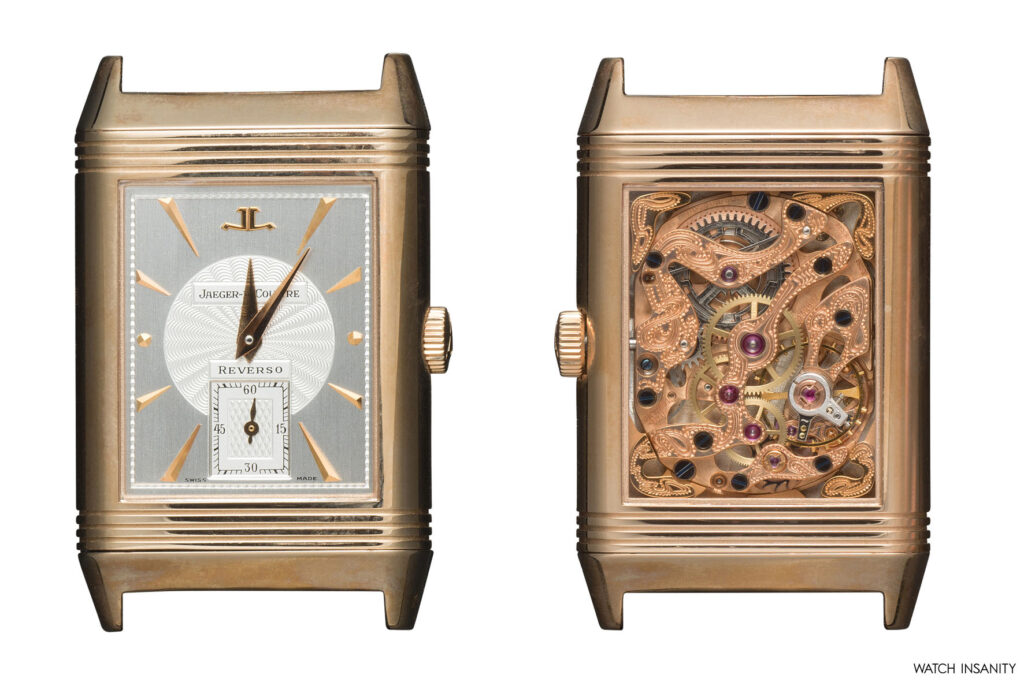
What was it like working with Jaeger-LeCoultre at the time?
It was a very nice experience. I started in 1977 experiencing the relaunch of the new Reverso, after the ‘Reverso Corvo.’ Under the direction of Monsieur Belmont, we then got to the 90s when there was a lot of enthusiasm and the brand grew exponentially. Going to Le Sentier was always very pleasant, they were very open to our suggestions on the distribution and commercial policy, so much so that the suggestions for some new models came from Italy.
For example?
I am thinking of the Master Compressor: we brought an old Jaeger-LeCoultre sports watch to the manufacture, which had a small seal with the word Compressor on the case, and from there the development of the new watch began. Again, I’m thinking of the Atmos Atlantis du Millénaire, for which we suggested to Jaeger-LeCoultre to switch from the classical hand-made marqueterie case to a futuristic glass case: perhaps it was the best-selling Atmos ever.
In Jaeger-LeCoultre, they still mention the Corvos as architects of the revival of the Reverso and of the brand. Without your father, perhaps, we would be telling a different story.
He had a bright idea because he did not only relaunch a model, but also a brand. In 1991 Jaeger-LeCoultre organized an exhibition in Milan for the Reverso’s 60th anniversary, with an excursus on the history of the manufacture and the watch, to present the 60th anniversary edition: it was the first with a gold movement, a pink gold Grande Taille case with power reserve indicator and date, made in 500 pieces. Belmont himself came to inaugurate the exhibition and he gave my father a 60th anniversary Reverso, piece number 60: he said it was the most beautiful Reverso ever made by Jaeger-LeCoultre.
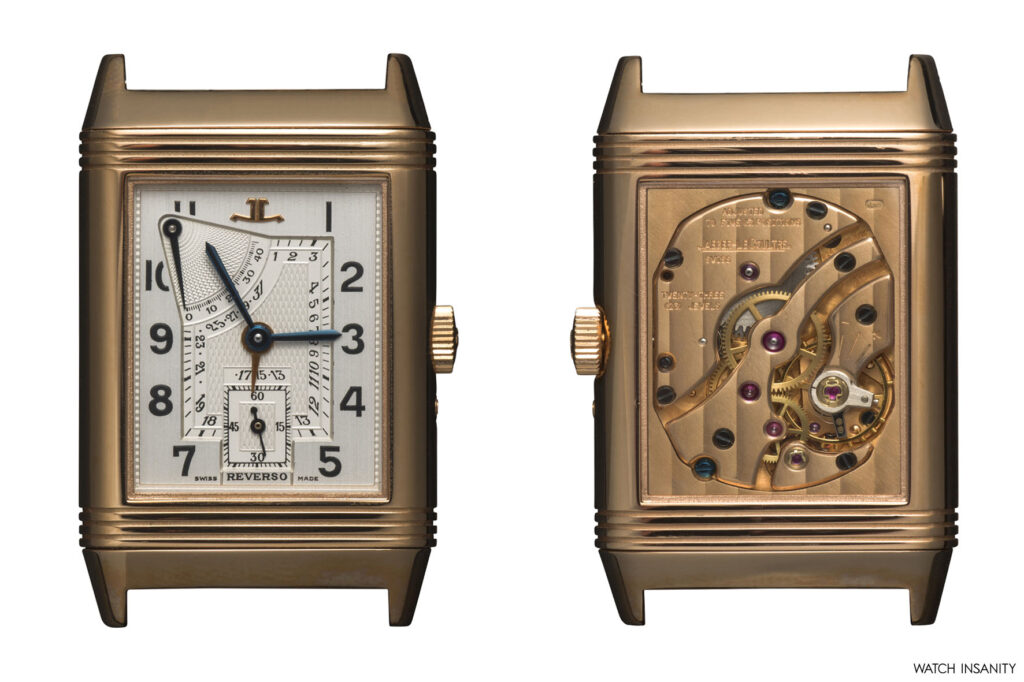
In addition to distribution, did you also provide after sale service at that time?
“Yes, we provided it for the Italian market. Italian dealers sent watches to be repaired to our laboratory in Milan, not to Switzerland. At that time, we had as many as eight watchmakers.”
What has changed in the watch industry since then?
Over time, many brands have joined large international groups, improving their financial strength but perhaps losing the desire to experiment and a bit of pioneering drive. Once, going to Jaeger-LeCoultre’s manufacture was an emotion, there was always something new, we stimulated each other at every level on products, strategies… It was a different way of working. Today, everything has changed, and not just for Jaeger-LeCoultre; I find that the actual players no longer have the passion they used to have, they are still very good but maybe they come to watchmaking from other worlds, approaching products they don’t know: they lack the emotional part. I believe that today it is almost impossible to get back in touch with creativity and it is more difficult to give suggestions; I remember that back then we even had briefings with distributors to decide what to present the following year, while now all this is science fiction, you cannot change marketing or commercial strategies. I think it’s a deterioration.
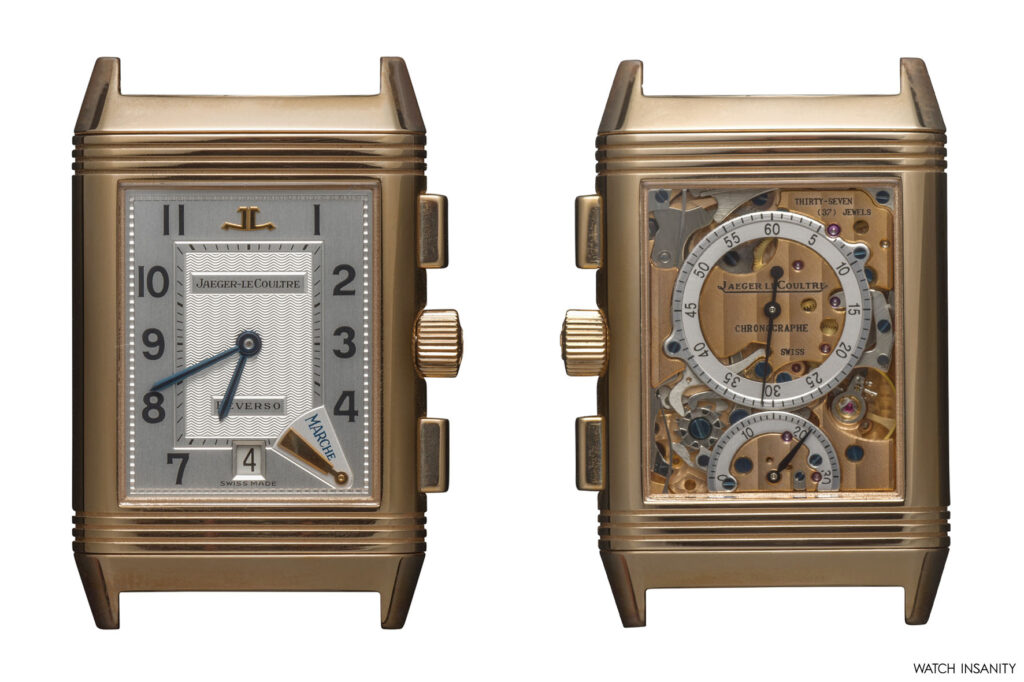
I think you saw all sorts of things at that time.
Let me mention an event. Eric Coudray – one of the best watchmaking masters in the world who also worked on the Gyrotourbillon – worked at the manufacture; at the time he was working on prototypes. When Philippe Vandel developed the minute repeater with three hammers for the Reverso, very small and for the first time in a rectangular-shaped case, Coudray had to test its reliability and developed a simple system: a vertical slide 1.5 meters high, dropping a weight of 1 kg with a rubber pad that hit the watch. To be reliable, it would have to work even after the impact. The idea of doing this on a minute repeater was terrifying for the director of the manufacture, but after the impact the complication continued to work. Back then there were incredible guys in the manufacture, crazy technicians who worked in a very fun and free workplace.
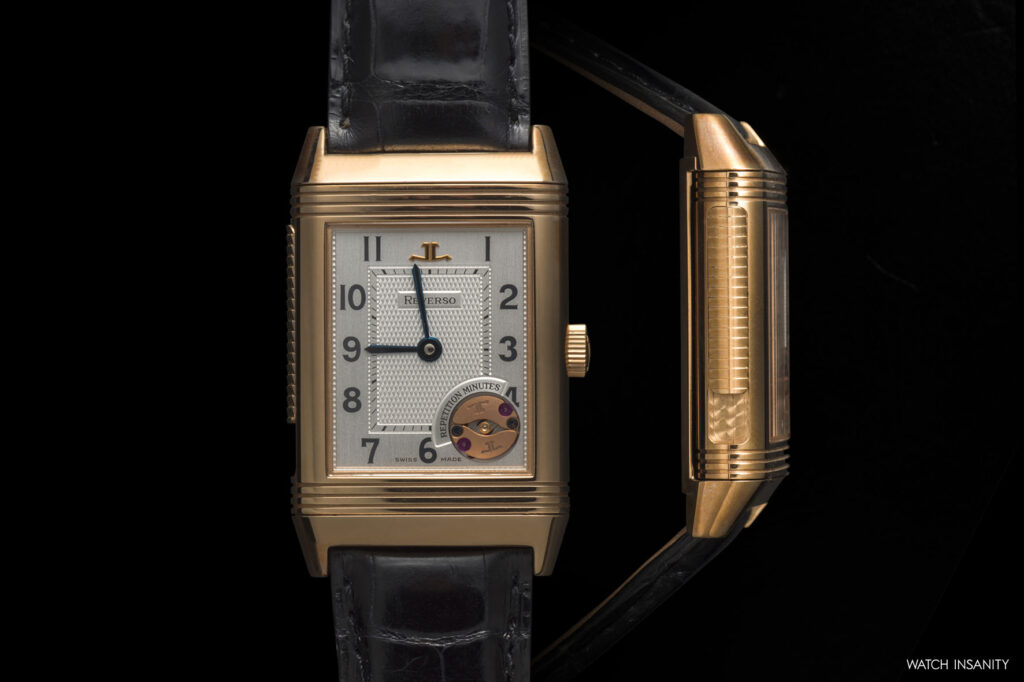
What is the ranking of your favorite Reversos?
In my opinion, the Classique and the Grand Taille are the best versions of the watch, but I would rank: 1 – Grand Taille case in its different versions; 2 – White gold case with black dial and Chinoise numerals; 3 – Classique for men in gold, the first made for the relaunch of the model; 4 – the Corvo model with steel case, because it is a family watch.
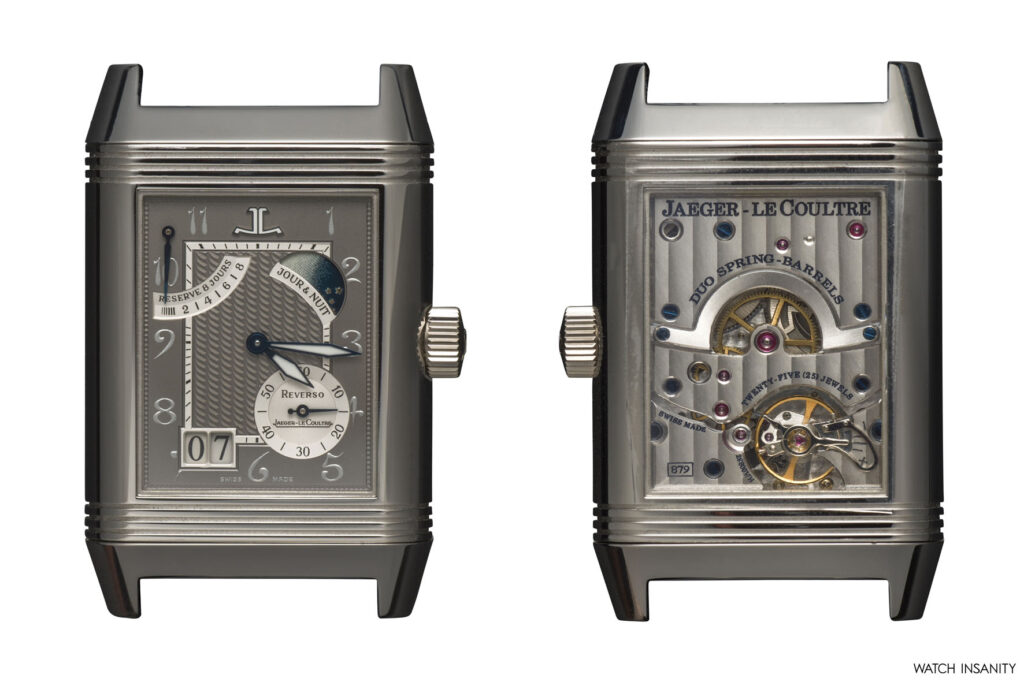
Complications were introduced on the Reverso from the 60th model. How did the market react?
The Italian market reacted euphorically. 180 pieces were sold in Italy out of the 500 of the Reverso Tourbillon, which was a very expensive watch for the time. This confirmed that Italy was the most important market for Jaeger-LeCoultre, thanks to the great work done on the Reverso. Among other things, the Tourbillon was the first Reverso with a complication on the back case.
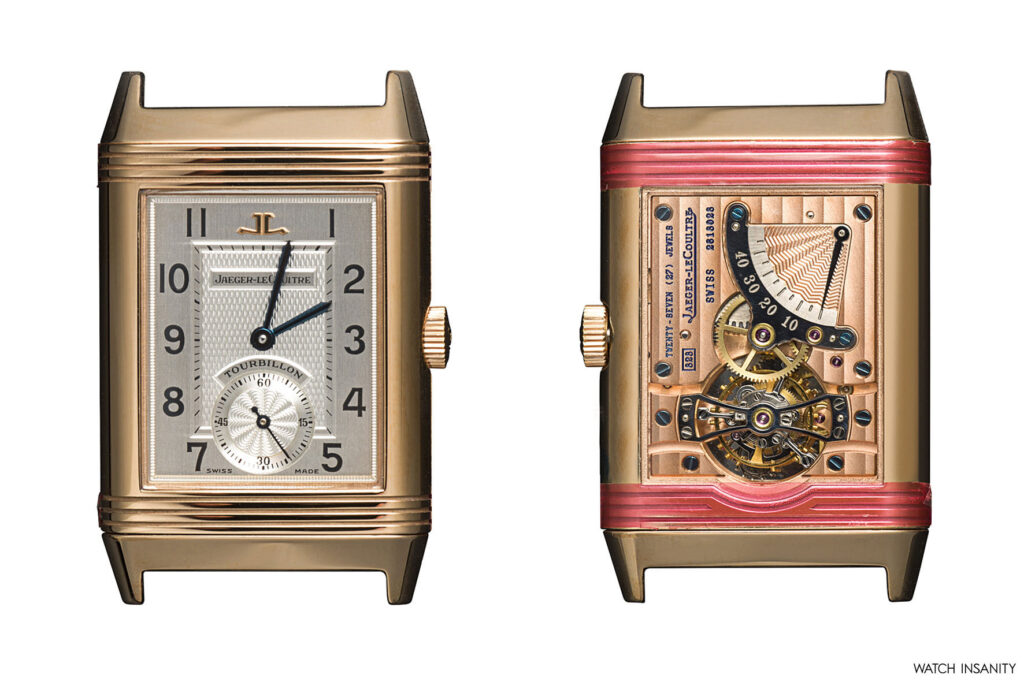
Do you think the Reverso created by Cartier bothered Jaeger-LeCoultre?
Jaeger was a French company which produced cases for Cartier in the 1930s, they designed the Dumont and the first rectangular Cartiers with bracelet; for Cartier they created the Cabriolet, a reversible watch, and other watches similar to the Reverso, including a square one. So, I would say no, it didn’t bother Jaeger-LeCoultre. In the 1930s the manufacture also made a Reverso for Patek Phillippe, with a Patek Philippe-branded dial.
In short, we are grateful to Michele Corvo for this interview. Because he offered us a little of his time, which is precious for everyone, not just for those who work with timekeeping instruments. Because he told us a beautiful family story, one of those stories that compose the secret of Italian genius. Because he reminded us once again that Italy has been and still is – perhaps a little less today than yesterday – a beacon for the watch industry. Because the Reverso by Jaeger-LeCoultre is still legendary after 90 years, thanks to the passion of people who know how to recognize and value the masterpieces of watchmaking.
By Davide Passoni

